- Home
- Deborah Harkness
The World of All Souls Page 2
The World of All Souls Read online
Page 2
Other times there’s a line in a song that inspires me. Kate Bush’s “Waking the Witch,” for instance, made me think about all the ways that Diana was “asleep” before her magic became unbound.
Bringing to Life the Characters of All Souls
Diana is such a unique character—strong, independent, and vulnerable too. There are striking parallels between Diana’s life and your own. How much does she reflect you and your experience?
Certainly the fact that Diana is a historian and working at the Bodleian was something I knew, though I must say that what historians actually do in a day is not always how it seems in books. A lot of Diana’s character details simply came from putting her in a particular situation and imagining what someone with her background and characteristics would do. From that perspective Diana often does things that I would never do, because she’s not me.
Diana is a reluctant witch who gradually learns to embrace her power. This seems to have resonated with many of your readers. Why did you choose to tell this particular story, one about a reluctant witch?
I just don’t find it believable to think that if you were gifted with enormous power, you would be happy about it. I see too many people who are afraid of their talents, skills, voice, and ideas—never mind of wielding supernatural abilities.
How did the mysterious Matthew Clairmont take shape in your head?
Back when I started A Discovery of Witches and was first imagining this story about an ancient vampire scientist and a reluctant witch, I thought, Wouldn’t it be fun if my vampire was someone who really lived, someone mysterious who knew interesting people but remained in the shadows? I knew of just such a person in Elizabethan England, the poet-spy Matthew Roydon. From that moment on—and this was in 2008, so it was some time ago—Matthew Roydon’s life story determined a great deal about Matthew Clairmont’s intellectual habits and his taste in friends. A historical figure like Matthew Roydon is a novelist’s dream, because what little we know about him is so fascinating and leaves so much room for creative invention.
Ashmole 782 is a core character in the novels alongside Diana and Matthew, and the trilogy is a story of books as much as of creatures. Did you find that Ashmole 782 took on a life of its own as you began writing, or was it fully formed from the beginning?
Like most of my characters, Ashmole 782 grew and changed over the course of the writing. There’s not much information to go on about this “real” historical character, so I was able to imagine a book into being. That was an exciting process.
How difficult was it to re-create real historical characters you’ve spent years researching into a fictional context? Did you already have clear voices for Elizabeth I, Kit Marlowe, Walter Raleigh, Mary Sidney, and others?
I suppose it’s a bit of both. I usually have some sense of a character based on the texts they read or wrote, some of which I’ve been studying for decades. That familiarity makes me react strongly to the “pop-culturing” of historical characters in books and other media. Some treatments of these individuals make them either cuddly or monsters. Most were neither. They were just doing the best they could in a challenging world. That said, I don’t usually work out full character sketches in advance. The fine details of their characters emerge as I put them in specific situations. So Henry Percy’s mother and her goose came about because I started wondering what kind of Christmas the Earl of Northumberland would have enjoyed growing up, which led me to research his mother, who turned out to be quite a character.
The historical character I knew best was probably Elizabeth I. I wrote my master’s thesis on how Elizabeth relied on the symbolism surrounding the goddess Diana (both the virgin huntress and the wilder, witchier side of the goddess) to bolster her own power. I’ve been fascinated by Elizabeth Tudor since I was a teenager, studied her life and reign through my undergraduate education and into my graduate-school training. She is a fixture of my teaching now that I’m a professor. Reading her personal writings each year with my students gives me fresh insights into her character and her voice. Even after forty years, however, Elizabeth still manages to be elusive. I’m not sure I will ever figure her out.
Everyone loves Matthew and Diana, but other characters who are not always at center stage are equally popular, including Gallowglass, Philippe, Ysabeau, and Marcus. If you had to pick one, who would be your favorite in the trilogy?
Philippe de Clermont, without question. He is the axis of the All Souls universe, the still point in the center around which the whole story turns. Without Philippe there would be no story. It’s odd to have the main character in the trilogy appear only briefly in the second volume, but his placement in the arc of the story actually underscores how central he is to the narrative.
What was the toughest thing you’ve had to do to a character when you were writing the books?
The toughest thing was being honest about Matthew’s dark and deceitful side. He is not a standard hero. He truly does have rough edges and prejudices that make him not just annoying and troublesome but dangerous and problematic. I like Matthew, so there is always a temptation to smooth him out and make him more affable and appealing. That can be hard to resist.
Did any of your characters surprise you as you were writing?
All of them did! But the biggest surprises came from the appearance of Hamish and Gallowglass. I know that sounds silly—how could I be surprised if I’m the author? But I had no plans for Matthew to have a best friend when I began, and certainly no idea he had such a fabulous nephew. In the case of Hamish, I actually left my office and shouted down the hall, “Matthew is in a car! He’s driving! I don’t know where!” I soon found out: He was going to visit his daemonic friend Hamish. As for Gallowglass, I was writing the scene in the Old Lodge’s great hall and was feeling a bit peevish about Kit’s and Matthew’s behavior when suddenly the door to the hall burst open, a blast of damp air came in, and Gallowglass arrived with it. Once he was in the story, I simply couldn’t get him out again. It meant stopping everything for three weeks and figuring out who this Gael was and what role he had in the story, but I think it was worth it.
Constructing the World of All Souls
From Oxford to the Auvergne, Madison and New Haven to Venice, the characters in the trilogy travel to incredible locations throughout the world. Have you been to all the places featured in the books?
As a writer I really need to experience the places I write about in my books. I want to know what they smell like, how the air feels when it changes direction, the way the sunlight strikes the windowsill in the morning, the sounds of birds and insects. Not every writer may require this, but I do. That’s why I spent time in New Haven undertaking research at the Beinecke Library so I could understand the rhythms of Diana’s day there. I visited New Orleans several times to imagine my vampires into that city. All the locations I pick are steeped in history and stories about past inhabitants—perfect fuel for any writer’s creative fire.
Your historical research is woven in effortlessly to create the fabric of the All Souls world. How difficult did you find it to balance all that you know of the sixteenth century with writing fiction? How important is historical accuracy to you in the details of your fictional writing?
Historical accuracy is very important to me, for obvious reasons. I like to stick to the sources as closely as possible and try never to violate them. But historical accuracy is not always the same as historical truth. Not all sources survive, and we have few reflective writings from the early modern and medieval periods, so historians are wary of asserting how people thought and felt. Obviously, thinking and feeling are quite important when you’re writing a novel. I’ve spent decades reading and studying the available sources for the period, and there are aspects of life in the past that I may have a feeling about, but there are no sources to back up those feelings. As a historian I can’t do much with gut feelings. As a novelist, however, I can tell what I believe to
be historically true, even if I don’t have source materials.
As for balancing out historical information with fiction, I’ve found that a little historical information goes a long way. I can, for instance, spend three pages describing a sixteenth-century table. But I must ask myself: If this story was set in modern times, would I spend three pages describing a table? Usually the answer is no. So I try to use the historical information like seasoning in a stew and sprinkle it in rather than just dumping it.
How important were these gaps in the historical record when it came time to plotting out Diana and Matthew’s story?
All those frustrating silences that aggravate me as a historian turned out to be perfect opportunities for me as a novelist. The fact that there’s very little hard factual information on Matthew Roydon, for instance, gave me the perfect chance to craft Matthew’s Elizabethan backstory. The legends about witches raising a wind to keep James VI of Scotland in Denmark provided me with a way to dramatize the perils that might befall witches who meddled in human politics.
You have had your own experience of uncovering a mysterious lost manuscript in an old library. Could you tell us the story behind your discovery and how that inspired the trilogy?
I did discover a manuscript—not an enchanted one, alas—in the Bodleian Library. It was a manuscript owned by Queen Elizabeth’s astrologer, the mathematician and alchemist John Dee. In the 1570s and 1580s, he became interested in using a crystal ball to talk to angels. The angels gave him all kinds of instructions on how to manage his life at home, his work—they even told him to pack up his family and belongings and go to faraway Poland and Prague. In the conversations Dee asked the angels about a mysterious book in his library called the Book of Soyga, or Aldaraia. No one had ever been able to find it, even though many of Dee’s other books survive in libraries throughout the world. In the summer of 1994, I was spending time in Oxford between finishing my doctorate and starting my first job. It was a wonderfully creative time, because I had no deadlines to worry about and my dissertation on Dee’s angel conversations was complete. As with most discoveries, this discovery of a “lost” manuscript was entirely accidental. I was looking for something else in the Bodleian’s catalog and in the upper corner of the page was a reference to a book called Aldaraia. I knew it couldn’t be Dee’s book, but I called it up anyway. And it turned out it was the book (or at least a copy of it). With the help of the Bodleian’s Keeper of Rare Books, I located another copy in the British Library.
The significance of family and community emerges as a core theme in the trilogy. Was this something that was important to you in creating Diana and Matthew’s world?
Since time immemorial the family has been an important way for people to organize themselves in the world. In the past the traditional family was a sprawling and blended unit that embraced close relatives, in-laws and their immediate families, servants, orphaned children, the children your partner might bring into a family from a previous relationship, and other dependents. Marriage was an equally flexible and elastic concept in many places and times. Given how old my vampires are, and the fact that witches are the keepers of tradition, I wanted to explore from the very first page of the series the truly traditional basis of family: unqualified love and mutual responsibility. That is certainly the meaning of family that my parents taught me.
The conflicts between creatures in the trilogy mirror many divisions of race and sexuality in our own societies. What ideas do you hope readers will come away with from exploring these issues through the fantasy world you have created?
Human beings like to sort and categorize. We have done this since the beginnings of recorded history, and probably well back beyond that point. One of the most common ways to do so is to group things that are alike and things that are different. I think we have a very complicated relationship to creatures and people who aren’t like us. On the one hand, we are enormously attracted to them, we are fascinated by them, and we want to know more. But often we fear what is not like us. Many of the world’s ills have stemmed from someone (or a group of someones) deciding that what is different is also dangerous. Witches, women, people of color, people of different faiths, people of different sexual orientations—all have been targets of this process of singling others out and labeling them different and therefore undesirable. Like my interest in exploring what a family is, the issue of difference and respect for difference (rather than fear) informed every page of the All Souls trilogy. And yes, I do think that dealing with fantastic creatures like daemons, vampires, and witches rather than confronting issues of race or sexuality directly can enable readers to think through these issues in a useful way and perhaps come to different conclusions about members of their own families and communities. As I often say when people ask me why supernatural creatures are so popular these days: Witches and vampires are monsters to think with.
One of the things that make the All Souls world building so vivid is the way in which you use genetics to create a scientific explanation for the supernatural. You are a historian of science but not a scientist. How did you ensure you were getting the science correct?
I did a lot of reading about genetics and different theories about chromosomal change, and I read studies of spontaneous chromosomal mutations due to pathogen bombardments. It seemed to me that there were all kinds of wonderful possible explanations in the scientific world for creature differentiation, so that’s the explanation I went with.
For me the world of the trilogy needed to make some sense in our modern, scientific perspective. I realized that modern genetic research would be a problem. The various species were once differentiated from humans because they could make certain things happen or had a dissimilar diet. Today, however, being admitted to the hospital after a car accident and having their blood tested might result in discovery. This could be enormously frightening to individuals but could also offer the prospect of real understanding between species.
As an aside, I also think that alchemy fed into my combination of fantasy and science, because alchemy is a scientific discipline positing that substances can change fundamentally from one thing to another. Alchemy has a rich set of images and beliefs about how a seed can turn into a plant, or lead can turn into gold, or the mortal can change into the immortal. So I began to wonder, well, how was neuroscience like magic or neutron bombardment like alchemy? Those were really fun days, when big conceptual pieces of the worldview puzzle began to fall into place.
In the end I hope readers come to appreciate that science—past or present—is nothing more than a method for asking and answering questions about the world and our place in it. Once, some of those questions were answered alchemically. Today they might be answered biochemically and genetically. In the future? Who knows. But Matthew is right in suggesting that there are really remarkably few scientific questions and we’ve been posing them for a very long time. Two of them are these: Who am I? Why am I here?
The magic is as real and powerful as science in the trilogy. With alchemy as the intersection of the two, how else did you approach theories of magic to ensure its position as equal to science in the All Souls world?
Believe it or not, my inspiration for weaving came from a branch of mathematics called topology. I became intrigued by mathematical theories of mutability to go along with my alchemical theories of mutability and change. Topology is a mathematical study of shapes and spaces that theorizes how far something can be stretched or twisted without breaking. You could say it’s a mathematical theory of connectivity and continuity (two familiar themes to any reader of the All Souls trilogy). I wondered if I could come up with a theory of magic that could be comfortably contained within mathematics, one in which magic could be seen to shape and twist reality without breaking it. I used fabric as a metaphor for this worldview, with threads and colors shaping human perceptions. Weavers became the witches who were talented at seeing and manipulating the underlying fabric. In topology, m
athematicians study knots—unbreakable knots with their ends fused together that can be twisted and shaped. Soon the mathematics and mechanics of Diana’s magic came into focus.
Readers all over the globe have embraced the world and characters you’ve created. What has been your reaction to the outpouring of love for the All Souls trilogy?
It’s been amazing. I was surprised by how quickly readers embraced two central characters who have a considerable number of quirks and who challenge our typical notion of what a heroine or a hero should be. And I continue to be amazed whenever a new reader pops up—whether one in the United States or somewhere like Finland or Japan—to tell me how much she enjoyed being caught up in the world of the Bishops and de Clermonts. Sometimes when I meet readers, they ask me how their friends are doing—meaning Diana, or Matthew, or Miriam. That is an extraordinary experience for any writer.
Synopses
A Discovery of Witches
Diana Bishop is a reluctant witch from a long line of distinguished witches. Her ancestor Bridget Bishop was hanged for the practice of witchcraft in Salem in 1692, and Diana’s parents, both powerful witches, were mysteriously murdered when she was seven. As a result Diana wants nothing to do with witchcraft or magic. Instead she studies the history of science, with a focus on alchemy. By the age of thirty-three, she is a tenured professor at Yale University and safely removed from the world of magic.
In September 2009 Diana is visiting Oxford University in England. At the Bodleian Library, Diana requests an alchemical manuscript, Ashmole 782, that once belonged to the seventeenth-century book collector and alchemist Elias Ashmole. It contains strange illustrations and is obviously enchanted, with a hidden layer of words shimmering under its surface. The first three pages have been removed. Puzzled but reluctant to be involved with magic, Diana returns the manuscript to the stacks.

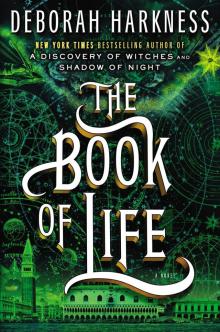 The Book of Life
The Book of Life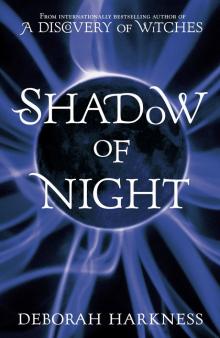 Shadow of Night
Shadow of Night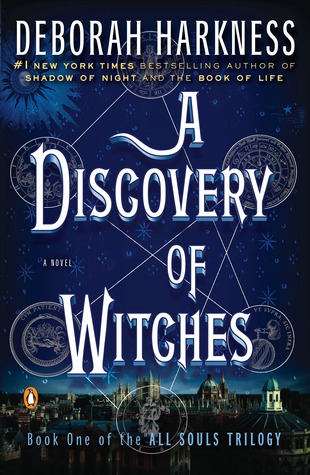 A Discovery of Witches
A Discovery of Witches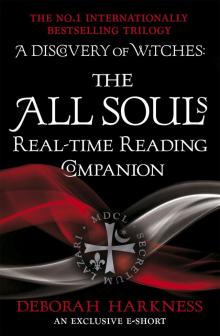 The All Souls Real-Time Reading Companion
The All Souls Real-Time Reading Companion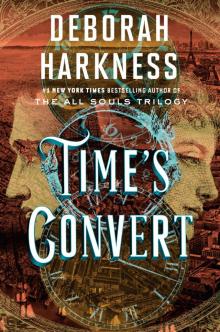 Time's Convert
Time's Convert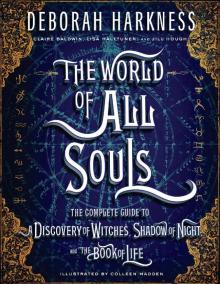 The World of All Souls
The World of All Souls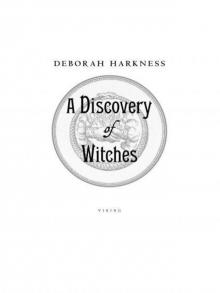 A Discovery of Witches: A Novel (All Souls Trilogy)
A Discovery of Witches: A Novel (All Souls Trilogy) Shadow of Night: A Novel
Shadow of Night: A Novel